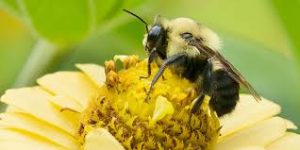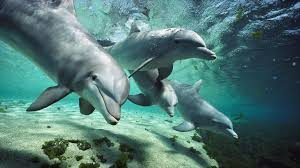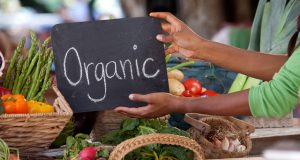06
Nov
Coconut-Derived Insect Repellent More Effective than the Hazardous DEET
 (Beyond Pesticides, November 6, 2018) Scientists working for USDAâs Agricultural Research Service in Lincoln, Nebraska have discovered natural compounds derived from coconut oil that are more effective than DEET at repelling mosquitoes, ticks, biting flies, bed bugs and other insects. Given the long-lasting efficacy of the compounds researchers tested, commercialization could make the regular use of toxic insect repellents, like DEET, obsolete. Advocates are praising USDA researchers for the results, indicating that this is exactly the type of research government agencies should be funding and promoting.
(Beyond Pesticides, November 6, 2018) Scientists working for USDAâs Agricultural Research Service in Lincoln, Nebraska have discovered natural compounds derived from coconut oil that are more effective than DEET at repelling mosquitoes, ticks, biting flies, bed bugs and other insects. Given the long-lasting efficacy of the compounds researchers tested, commercialization could make the regular use of toxic insect repellents, like DEET, obsolete. Advocates are praising USDA researchers for the results, indicating that this is exactly the type of research government agencies should be funding and promoting.
It is important to note that USDA scientists did not find coconut oil itself to be an effective repellent. Lab equipment was used to analyze and isolate medium chain fatty acids within coconut oil for their repellent properties. Scientists zeroed in on a blend of C8 (caprylic acid), C10 (capric acid), and C12 (lauric acid) fatty acids as the most effective repellent mixture. Individually, only C12 exhibited anywhere near the same efficacy as the specific blend identified. The study indicates that more research is needed to understand why coconut oil itself was ineffective, and how the synergy between the fatty acid combinations resulted in such effective repellency.
To verify their hypothesis on the efficacy of the fatty acid blend, scientists tested the compounds on range of well-known pests that threaten public health and the agricultural economy. They began with a focus on biting flies (the stable fly and horn fly), which can reduce meat and milk production in cattle, and spread disease to humans. For the horn fly, researchers formulated the fatty acids in a starch blend and found it effective for up to four days, when used on cattle in the field. Â While the prevailing treatment against stable flies, catnip oil, provided 24 hours of protection, the coconut fatty acid blend showed effectiveness in the lab up to two weeks. Compared to DEET, which provides 50% control against stable flies, the coconut oil compound is 95% effective.
Researchers then looked at the effect of this blend on bed bugs. Both DEET and the fatty acid blend displayed roughly the same effectiveness after 24 hours, but the coconut-derived blend retained efficacy for much longer. After seven days, the coconut fatty acids were still 80% effective against bed bugs, while DEET lost much of its repellent activity after three days.
The dog and lone star ticks tested by scientists exhibited a response similar to bed bugs. The coconut oil blend was found to be nearly 90% effective for both tick species up to seven days. According to EPAâs insect repellent search tool, the longest effective time for a tick repellent currently on the market is the 14 hour protection provided by the picaridin-based Sawyer Picaridin Insect Repellent Lotion. The closest DEET-based product only provides 10 hours of tick repellency.
Scientists last tested their coconut-derived fatty acid blend on Aedes aegypti mosquitoes, which can spread yellow fever, dengue fever, chickungunya, and Zika, and are increasingly prevalent throughout the United States due to a warming climate. While the fatty acid blend was effective at repelling these mosquitoes, the concentrations needed to be much higher than DEET in order to be effective. However, at concentrations above 25%, both substances exhibited the same ability to provide 90% repellency against Aedes aegypti.
It is not an understatement to characterize this research as groundbreaking in its implications for the future development of insect repellents. DEET, which is widely recommended by government agencies and even some well-intentioned non-profit organizations, has been linked to a range of health impacts, with particular concern for children.  Symptoms of DEET exposure in humans can include headache, exhaustion, and mental confusion, together with blurred vision, salivation, chest tightness, muscle twitching and abdominal cramps. It is often applied to clothing in combination with synthetic pyrethroids, causing potential synergy that has been linked to brain damage and Gulf War syndrome. A 2009 study found a mother’s use of insect repellents, like DEET, during the first trimester of pregnancy to be associated with the birth defect hypospadias in newborns.
Most natural alternatives provide nowhere near the same length of efficacy as that displayed by the fatty acid compounds. The blend that researchers tested are also very cheap to produce and can be isolated through other plant compounds. Researchers estimate that cattle ranchers switching to this formulation could see significant savings on cattle fly repellents, as the cost of the coconut-derived fatty acids would only be roughly 10 cents per cattle.
USDA indicated in a press release that it has filed a patent application for this new technology, and is working with companies to develop formulas that replicate their work. This underlines the critical importance of the U.S. government investing in pest research and technology. As the Agricultural Research Service notes, âeach dollar invested in agricultural research results in $20 of economic impact.â This is not government waste, but a successful method to develop new, safer products for the consumer and commercial market. Beyond Pesticides will continue to monitor and update its readers should a coconut-oil fatty acid based natural product be approved for use.
In the meantime, continue to avoid DEET-based products. Currently, given that the efficacy time for natural and least-toxic insect repellents is similar to DEET, there should be no reason to opt for the compound that could put oneâs individual health at risk. See Beyond Pesticidesâ least toxic mosquito repellent fact sheet for more information on safer, alternative repellents. See, also, Beyond Pesticides mosquito management webpage and Public Health Mosquito Management Strategy for Decision.
All unattributed positions and opinions in this piece are those of Beyond Pesticides.
Source: Agricultural Research Service PR, Scientific Reports









 (Beyond Pesticides, November 5, 2018) As you know, the stakes in this midterm election are high. Many races are too close to call and will be decided by voter turnout. As we have read, our vote  will make a difference!
(Beyond Pesticides, November 5, 2018) As you know, the stakes in this midterm election are high. Many races are too close to call and will be decided by voter turnout. As we have read, our vote  will make a difference!
 (Beyond Pesticides, November 1, 2018) A new
(Beyond Pesticides, November 1, 2018) A new  (Beyond Pesticides, October 31, 2018) Residents in the town of Great Barrington, MA are concerned about the health effects that could result from creosote-coated railroad ties stored in their neighborhood. According to a report in the
(Beyond Pesticides, October 31, 2018) Residents in the town of Great Barrington, MA are concerned about the health effects that could result from creosote-coated railroad ties stored in their neighborhood. According to a report in the  (Beyond Pesticides, October 30, 2018)Â The
(Beyond Pesticides, October 30, 2018)Â The  (Beyond Pesticides, October 29, 2018)Â Protect the integrity of the organic standard setting process that determines whether a synthetic substance will be allowed in food labeled organic. Help stop an attack on the meaning of the organic label in the Farm Bill, which may be voted out of conference committee by the end of November. By changing the substance review process, a provision will open the floodgates to allowed synthetic chemicals in organic production, handling, and processing under the
(Beyond Pesticides, October 29, 2018)Â Protect the integrity of the organic standard setting process that determines whether a synthetic substance will be allowed in food labeled organic. Help stop an attack on the meaning of the organic label in the Farm Bill, which may be voted out of conference committee by the end of November. By changing the substance review process, a provision will open the floodgates to allowed synthetic chemicals in organic production, handling, and processing under the  (Beyond Pesticides, October 26, 2018) California Superior Court Judge Suzanne Bolanos is upholding a juryâs verdict that exposure to the herbicide glyphosate caused school groundkeeper Dewayne Johnson to develop cancer. The ruling comes after concern that Judge Bolanos would intervene and
(Beyond Pesticides, October 26, 2018) California Superior Court Judge Suzanne Bolanos is upholding a juryâs verdict that exposure to the herbicide glyphosate caused school groundkeeper Dewayne Johnson to develop cancer. The ruling comes after concern that Judge Bolanos would intervene and  (Beyond Pesticides, October 25, 2018) A
(Beyond Pesticides, October 25, 2018) A  (Beyond Pesticides, October 24, 2018) Bottlenose dolphins found along Floridaâs west coast contain detectable levels of phthalates, chemicals used in plastics, cosmetics and as
(Beyond Pesticides, October 24, 2018) Bottlenose dolphins found along Floridaâs west coast contain detectable levels of phthalates, chemicals used in plastics, cosmetics and as  (Beyond Pesticides, October 23, 2018)Â The
(Beyond Pesticides, October 23, 2018)Â The  (Beyond Pesticides, October 22, 2018)Â The California Department of Pesticide Regulation (DPR) is accepting comments on its proposal to classify chlorpyrifos as a toxic air pollutant. The classification would require DPR to develop control measures that adequately protect public health. What happens in California affects all of us because products of California agriculture are available all over the country âand the world. In addition, policies set by the state of California are often examples for other states and the federal government.
(Beyond Pesticides, October 22, 2018)Â The California Department of Pesticide Regulation (DPR) is accepting comments on its proposal to classify chlorpyrifos as a toxic air pollutant. The classification would require DPR to develop control measures that adequately protect public health. What happens in California affects all of us because products of California agriculture are available all over the country âand the world. In addition, policies set by the state of California are often examples for other states and the federal government. (Beyond Pesticides, October 19, 2018)Â Pollinator advocates and the Center for Biological Diversity (CBD) are imploring the U.S. Environmental Protection Agency (EPA) to deny Bayer CropScienceâs application for use of âSivanto,âa pesticide product with the active ingredient
(Beyond Pesticides, October 19, 2018)Â Pollinator advocates and the Center for Biological Diversity (CBD) are imploring the U.S. Environmental Protection Agency (EPA) to deny Bayer CropScienceâs application for use of âSivanto,âa pesticide product with the active ingredient  (Beyond Pesticides, October 18, 2018) Pesticide residue doesnât announce itself âit isnât colored, it doesnât glow or reflect light, and after an initial application doesnât put out a discernible odor – but it is likely ubiquitous in rural U.S. homes, according to a
(Beyond Pesticides, October 18, 2018) Pesticide residue doesnât announce itself âit isnât colored, it doesnât glow or reflect light, and after an initial application doesnât put out a discernible odor – but it is likely ubiquitous in rural U.S. homes, according to a  (Beyond Pesticides, October 17, 2018)Â The unsustainable life cycle management of pesticides during the past seven decades has created huge stockpiles of these (and other toxic) chemicals across much of the globe, including Eastern Europe, Africa, the Middle East, and Latin America. The journal
(Beyond Pesticides, October 17, 2018)Â The unsustainable life cycle management of pesticides during the past seven decades has created huge stockpiles of these (and other toxic) chemicals across much of the globe, including Eastern Europe, Africa, the Middle East, and Latin America. The journal  (Beyond Pesticides, October 16, 2018) Bacteria exposed to widely used herbicides like Roundup develop antibiotic resistance 100,000 times faster than average, according to new research published by New Zealand scientists in
(Beyond Pesticides, October 16, 2018) Bacteria exposed to widely used herbicides like Roundup develop antibiotic resistance 100,000 times faster than average, according to new research published by New Zealand scientists in  (Beyond Pesticides, October 15, 2018)Â As a leader in organic sales, it is critical that Kroger take additional expedited steps to increase the market share of organic food and eliminate the use of toxic pesticides harmful to public health and the environment. Kroger is among the major food retailers that sells food that has been grown with toxic pesticides, such as the extremely hazardous insecticide chlorpyrifos which causes neurological and brain damage in children. Kroger should immediately end its misleading and fraudulent advertising and labeling of food products as ânaturalâ and replace these with certified organic products. In fact, by misleading consumers with ânaturalâ labeling and advertising of food, Kroger supports chemical-intensive agriculture that poisons children, causes cancer, and threatens biodiversity through the use of toxic chemicals like chlorpyrifos, glyphosate, and neonicotinoids. This is unnecessary and unacceptable.
(Beyond Pesticides, October 15, 2018)Â As a leader in organic sales, it is critical that Kroger take additional expedited steps to increase the market share of organic food and eliminate the use of toxic pesticides harmful to public health and the environment. Kroger is among the major food retailers that sells food that has been grown with toxic pesticides, such as the extremely hazardous insecticide chlorpyrifos which causes neurological and brain damage in children. Kroger should immediately end its misleading and fraudulent advertising and labeling of food products as ânaturalâ and replace these with certified organic products. In fact, by misleading consumers with ânaturalâ labeling and advertising of food, Kroger supports chemical-intensive agriculture that poisons children, causes cancer, and threatens biodiversity through the use of toxic chemicals like chlorpyrifos, glyphosate, and neonicotinoids. This is unnecessary and unacceptable. (Beyond Pesticides, October 12, 2018)Â For the first time in its history, the Vermont Department of Environmental Conservation (DEC) denied a permit to apply toxic pesticides to a local waterbody, according to reports from the regional nonprofit organization Toxics Action Center. The DEC decision responded to an application from the Town of Williston, VT to use the herbicide SePRO Sonar ASÂź on Lake Iroquois, a 237 acre spring-fed body of water used for public recreation, in order to control Eurasian watermilfoil. DEC ruled that use of the herbicide posed risks to the holistic integrity of the lake waters, the Champlain watershed, and surrounding ecology.
(Beyond Pesticides, October 12, 2018) For the first time in its history, the Vermont Department of Environmental Conservation (DEC) denied a permit to apply toxic pesticides to a local waterbody, according to reports from the regional nonprofit organization Toxics Action Center. The DEC decision responded to an application from the Town of Williston, VT to use the herbicide SePRO Sonar ASŸ on Lake Iroquois, a 237 acre spring-fed body of water used for public recreation, in order to control Eurasian watermilfoil. DEC ruled that use of the herbicide posed risks to the holistic integrity of the lake waters, the Champlain watershed, and surrounding ecology. (Beyond Pesticides, October 11, 2018) Healthy, stable populations of bees and butterflies are best preserved in farm fields that are certified organic, according to an extensive, three-year study conducted by Swedish researchers at Lund University. The research, published last month in the journal
(Beyond Pesticides, October 11, 2018) Healthy, stable populations of bees and butterflies are best preserved in farm fields that are certified organic, according to an extensive, three-year study conducted by Swedish researchers at Lund University. The research, published last month in the journal  (Beyond Pesticides, October 10, 2018) Nearly one-third of General Mills shareholders called on the company last month to improve product stewardship and eliminate pesticides like bee-toxic
(Beyond Pesticides, October 10, 2018) Nearly one-third of General Mills shareholders called on the company last month to improve product stewardship and eliminate pesticides like bee-toxic  (Beyond Pesticides, October 9, 2018)Â In two separate moves, EPA
(Beyond Pesticides, October 9, 2018)Â In two separate moves, EPA  (Beyond Pesticides, October 5, 2018) The Oregon Department of Agriculture (ODA) is
(Beyond Pesticides, October 5, 2018) The Oregon Department of Agriculture (ODA) is 
